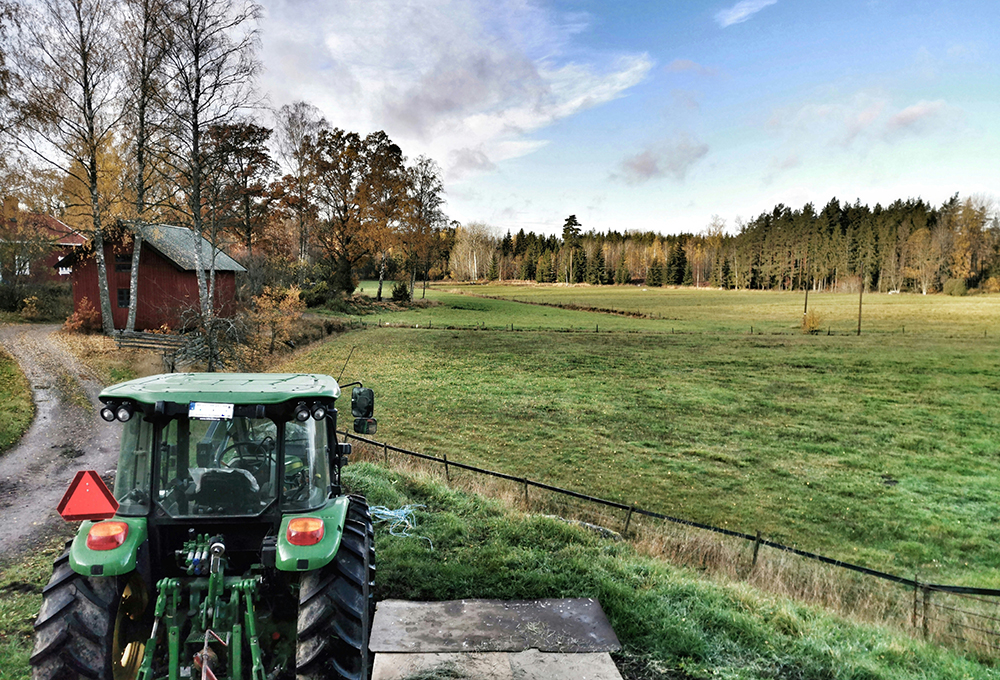Preparedness: more than stockpiling pantry provisions
When planning for food in times of crisis – what foodstuffs do we imagine? Many think of tin cans and freeze-dried food, but the fact is that if a crisis occurs, it is not stockpiled cans that will save us.
Jessika Sellergren – Publicerad den 1 June 2024

Per Becker works on preparedness issues at LTH. He is a professor of risk management and societal safety and explains that in times of crisis or war, we will eat whatever is available. We do not have specific stores of “crisis food”.
“Our preparations are designed for small interruptions, not long periods without access to food,” he says.
Planning food in times of crisis is closely linked to other forms of preparedness work.
“All the parts are interlinked, and if one cog in the system is knocked out, another will also cease to function. For example, if electricity fails, we cannot deliver drinking water, or if the road system collapses, we will be unable to distribute food deliveries.”
Packaging and transport
Per Becker explains that food preparedness is a question that goes far beyond what foods will be eaten.
Fredrik Nilsson agrees. He is a professor of packaging logistics and his research is about finding new ways to package and transport food and investigating innovative solutions for logistics and distribution.
According to Fredrik Nilsson, one of the great challenges lies in how to store and then distribute food to the populations.
“A modern and circular system for food includes clever packaging solutions and local foodstuffs that do not need to be transported over long distances in order to reach the people who will eat them,” he says.
These technical solutions are also part of preparedness, and technology that does not require refrigeration to preserve foodstuffs in the event of disruption to electricity supply already exists.
“But we need to find more clever solutions for the ingredients of the future – so that we can produce during the summer and have access to fresh crops during the winter, without the need for chilled storage.”
Fredrik Nilsson also points out that there is room for improvement in the regional structure for growing crops locally.
“Our degree of self-sufficiency needs to increase and one way of doing this is by learning more about cultivable crops for different temperature zones. What can we grow in southern Sweden that complements what we can grow in the northern part of the country?”
The leftovers must be used
But what are the crops of the future, that we will eat in the event of a crisis?
Anna Fureby conducts research into sustainable food production and biomanufacturing. She is a professor of food and pharma and like Per Becker says that food will not look different in the event of a crisis.
“What we need to focus on – regardless of whether we are in a crisis or not – is making use of the entire commodity. When we have a shortage of resources, it is important that what we grow is used to the maximum extent.”
Once the raw material from local production has been made use of, researchers in food technology take over and continue working with what is left over.
“You could say that we are upgrading the leftover raw materials,” says Anna Fureby.
It might mean fermentation, where food is preserved using microorganisms, or making use of agricultural byproducts, like developing new foodstuffs from the parts of a plant that are not normally harvested.
The technologies used for biomanufacturing need to be viable and competitive, as well as adaptable so that they also work in a crisis situation.
“It is necessary to have a level of preparedness in order to be able to distribute production to several locations. It might not be reasonable to have that set-up in peacetime, but it is important to be able to quickly adjust production when necessary.
Climate change is a factor
Both crises and wars demand preparedness, but Anna Fureby underlines the fact that we also need to consider climate preparedness.
“Growing conditions will change as a result of the changes to the climate. This might lead to food production having to be adapted, for example by growing crops that require less irrigation and pesticides.”
Needless to say, the food of the future also has to be tasty and nutritious.
“Besides the ingredients being climate-adapted and storable, as researchers in biomanufacturing we aim to ensure that the food is also nutritious, functional, looks appetising and tastes good,” says Anna Fureby.
Food preparedness at Almedalen
Food preparedness is on Lund University’s agenda for Almedalen Week this year. Fredrik Nilsson and Anna Fureby will be taking part in LTH’s panel discussion How do we put food on the table in the event of a crisis? on 26 June. Read about the programme in Almedalsguidens (in Swedish)



